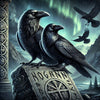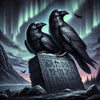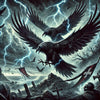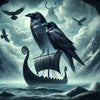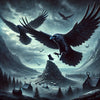Gungnir vs. Mjölnir: Which Was the Most Powerful Norse Weapon?
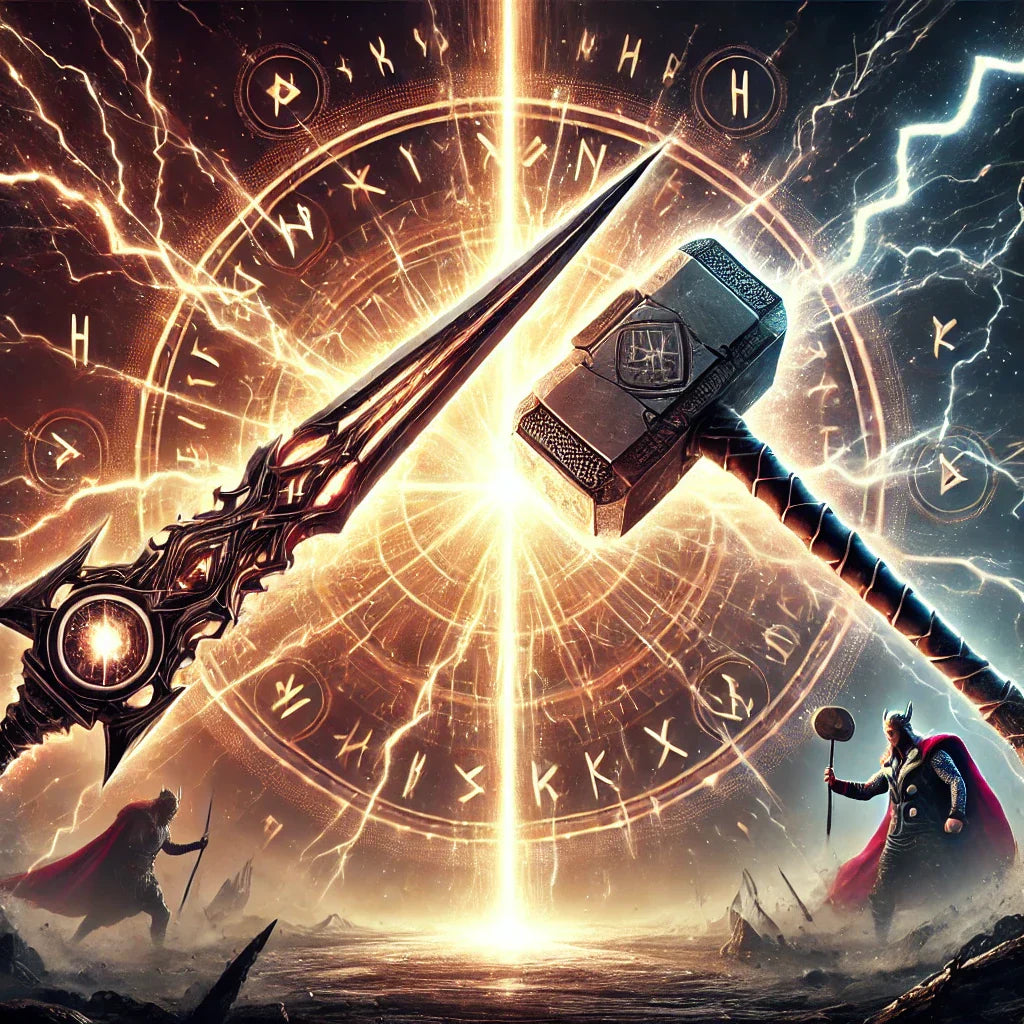
In the vast and legendary world of Norse mythology, where gods wage war and fate is woven into the very fabric of existence, few objects carry as much power and significance as Gungnir and Mjölnir. These two weapons, wielded by the greatest gods of Asgard, represented more than just tools of destruction—they were **symbols of divine authority, cosmic balance, and the raw power of the gods themselves**. Gungnir, the legendary spear of **Odin**, was known for its **unerring accuracy and runic enchantments**, making it the ultimate weapon of control, wisdom, and leadership. On the other hand, Mjölnir, the thunderous hammer of **Thor**, was a weapon of **overwhelming force and divine protection**, capable of leveling mountains and defending Asgard from the monstrous threats of the Nine Realms. But which of these legendary weapons was truly the most powerful? Was it Odin’s spear, infused with fate and divine magic? Or was it Thor’s hammer, forged to unleash the wrath of the storm? To answer this, we must dive into the origins, abilities, and legendary battles associated with these weapons and explore why they remain the most iconic symbols in Viking history.
The Origins of Gungnir: Odin’s Spear of Fate
Gungnir was not just any spear—it was **a divine creation, forged by the most skilled craftsmen in Norse mythology, the dwarves known as the Sons of Ivaldi**. These master blacksmiths were also responsible for creating some of the most powerful artifacts in Asgard, including **Draupnir, Odin’s golden ring of prosperity, and Skidbladnir, the magical ship of the gods**. The forging of Gungnir was no ordinary feat; it was crafted from **an unbreakable metal, infused with powerful runes**, ensuring that it would never miss its mark. Unlike weapons that relied on brute strength, Gungnir was an instrument of precision and prophecy, embodying Odin’s wisdom, authority, and deep understanding of fate. The spear was not just a tool of war—it was a **symbol of cosmic balance and divine will**, reinforcing Odin’s role as the Allfather, the one who watched over the realms and guided events toward their destined outcomes.
One of the most famous moments in Norse mythology involving Gungnir was during the **Aesir-Vanir War**, the legendary conflict between the two major groups of gods. According to myth, Odin cast Gungnir at the opposing army to signal the beginning of the war, an act that symbolized not just physical battle but the **power of fate itself**. Unlike other weapons, which required strength to wield effectively, Gungnir was **infused with magic and divine authority**, allowing it to strike true regardless of the wielder’s skill. This made Gungnir not only a weapon of war but a **manifestation of Odin’s power over destiny**. To further explore Odin’s mastery of fate and battle, check out our blog on The Binding of Fenrir, where Odin’s role in shaping the Norse cosmos is explored in depth.
The Might of Mjölnir: Thor’s Hammer of Destruction
While Gungnir was a weapon of wisdom and control, Mjölnir was the **embodiment of raw power, destruction, and divine protection**. Unlike Gungnir, which was thrown with precision and struck with destiny, Mjölnir was a hammer meant to **shatter mountains, crush enemies, and summon the fury of the storm**. Forged by the dwarven brothers **Brokk and Sindri**, Mjölnir was created in a contest to craft the greatest treasures of the gods. Though its handle was short due to Loki’s interference, Mjölnir’s strength was unmatched—it was capable of **destroying entire armies, channeling lightning, and even resurrecting the dead in some myths**. Thor used Mjölnir to **defend Asgard from giants, slay monstrous creatures, and maintain the balance of order in the Nine Realms**.
Mjölnir was more than just a tool of destruction; it was also a **symbol of protection and divine blessing**. It was used in **sacred rituals, including Viking weddings and ceremonies**, to provide the gods’ favor and ensure prosperity. Unlike Gungnir, which was tied to Odin’s leadership and foresight, Mjölnir was a weapon of **immediate impact, both physically and spiritually**. When wielded by Thor, it became a **guardian force against chaos**, ensuring that no matter how powerful the enemies of Asgard were, they would always be met with the **full wrath of the storm**. For more on Odin’s legendary weapon and its significance in battle, read our article on The Mystical Powers of Gungnir.
Gungnir vs. Mjölnir: Which Weapon Was Truly Supreme?
Comparing **Gungnir** and **Mjölnir** is not an easy task, as both weapons represented vastly different aspects of Norse mythology. Gungnir was a **weapon of absolute precision, wisdom, and divine prophecy**, ensuring that fate would be carried out exactly as Odin intended. It symbolized **leadership, strategic thinking, and the power of foresight**. Mjölnir, on the other hand, was the **ultimate force of nature, embodying strength, destruction, and protection**. Where Gungnir was **the weapon of order and destiny**, Mjölnir was **the weapon of chaos and renewal**—breaking apart the old to make way for the new.
So, which weapon was truly more powerful? The answer depends on how one defines power. If power is the ability to control fate and ensure victory before battle even begins, then Gungnir is **the supreme weapon of destiny**. However, if power is measured in raw strength, destructive force, and the ability to defend against any threat, then **Mjölnir reigns as the most formidable weapon of all**. Regardless of which weapon one favors, both Gungnir and Mjölnir remain eternal symbols of **Viking strength, resilience, and the balance between wisdom and might**.
Carry the Legacy of Gungnir
At **Odin’s Glory**, we honor the legacy of **Gungnir** through our Gungnir Viking Jewelry Collection. Each piece is designed to **embody the power of Odin’s spear**, allowing you to carry the strength, wisdom, and destiny of the Allfather wherever you go.
Conclusion
Gungnir and Mjölnir stand as the two greatest weapons of Norse mythology, each embodying a unique aspect of **power, fate, and battle**. Whether you resonate more with Odin’s **spear of destiny** or Thor’s **hammer of destruction**, their legends continue to inspire those who seek strength, resilience, and the wisdom of the gods.
